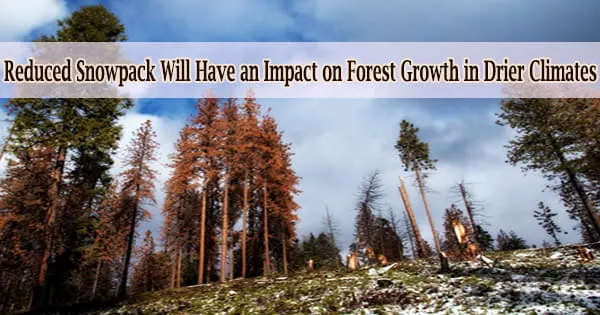According to a recent study, forest development in semi-arid regions may be significantly impacted by future declines in the seasonal snowpack as a result of climate change, but less so in wetter climates.
Forest density and snowpack can influence drought stress and forest growth in ways that are crucial to recognize for managing forests in a changing climate, according to research from Portland State University, the U.S. Geological Survey, the U.S. Forest Service, and the universities of Vermont and Maine.
Experimental forests with a high pine content were used as research locations in northern Arizona, South Dakota, and northern Minnesota.
Snowpack reductions are anticipated to have the most effects on forest growth in water-limited, dryland locations, according to a study led by Kelly Gleason, assistant professor of ecohydrology at PSU.
Reduced snowpack in these semi-arid regions may have an adverse effect on forest growth and may raise tree mortality. High-density forests only made this worse.
Forests are a lot more vulnerable because of increasing density. More trees are sharing the same amount of water, and there’s less water over time because of climate change impacts.
Kelly Gleason
“Forests are a lot more vulnerable because of increasing density,” Gleason said. “More trees are sharing the same amount of water, and there’s less water over time because of climate change impacts.”
According to her, thinning would increase the resilience of these forests in drier areas, such as much of the western United States, where water availability is influenced by snowfall.
The study discovered that, in contrast, in wetter areas like Minnesota, decreased snowfall as a result of future warmer winters may positively benefit forest development, maybe by lengthening the growing season.
The study discovered that in these forests, thinning would have less of an effect on the link between snowpack and growth.
















